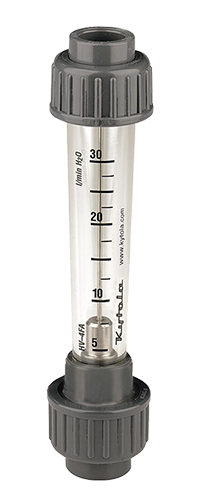What is reverse osmosis?
Reverse osmosis (RO) is a water filtration process where water is forced through a semipermeable membrane by water pressure. RO filtration removes fine particles and dissolved substances (such as salts) from water. Reverse osmosis filtration is widely used to produce drinking water from sea water and to produce high purity water for use in industrial processes.
There are various flowmeters used in reverse osmose installations. The variable area flow meter is used to visually measure the amount of water going through the tubes. Based on this flow, the installation can be adjusted to optimal functioning.
There is a good reason why Kytola’s model H is used very frequently in the reverse osmosis units.
First of all, Kytola Instruments’ flowmeters stand for the highest quality. The materials used in manufacturing are top notch.
Flow meters for reverse osmosis installation
Kytola provides 3 model H flowmeters that can cover almost all your needs
- With 1 size (Model HV) but different floats and tubes you can measure from 0.05 to 8 GPM water
- With 1 size (Model HK) but different floats you can measure from 1.5 to 20 GPM water
- With 1 size (Model HT) but different floats you can measure from 3 to 100 GPM water
Because Kytola uses all kinds of different designed and calibrated floats, you can switch out the flowmeter to a larger or smaller size without changing the tubing. This saves a lot of time in the design. Instead of having to glue expansion sockets to fit the larger flowmeter.
Kytola use on models HT, HK and the larger flows of model HV guide rods where the floats slide up and down the rod. This creates stability.
Many manufacturers use floats that move freely in the tube. When they go to a larger flow, they often need a larger float and tube to measure. Because of the construction of the Kytola flow meters, we can use the same size tube but put a different type float on the guide rod to measure a larger flow. You do need the same size tube but with a different scale.
Let's get in touch
Kytola Instruments Inc
900 Old Roswell Lakes Parkway, Suite 120
Roswell, GA 30076
Sales
kytola-instruments-model-h-the-best-solution-for-reverse-osmosis-installation
Sales (AR, LA, MS, NM, TX)
kytola-instruments-model-h-the-best-solution-for-reverse-osmosis-installation
President
kytola-instruments-model-h-the-best-solution-for-reverse-osmosis-installation
Where are you from?
Please select your country to browse in your own language and local units.




